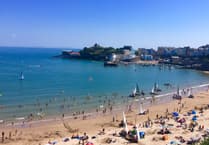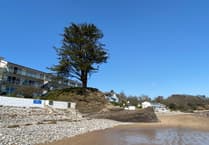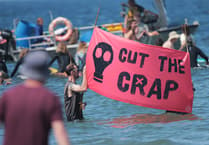UNDERWATER footage of Wales's biggest living mammal, the bottlenose dolphin , stars alongside a 'super-pod' of common dolphins, seals and their pups, porpoises and other marine life in a new education DVD film free for every Welsh school. The 'Bay of Life' video launched yesterday (Thursday) at the Cardigan Bay Marine Wildlife Centre, New Quay, and takes the viewer on a voyage through the three species of dolphins in Cardigan Bay and their different behaviour, the seals and their nesting beaches along the Special Area of Conservation, the unusual honeycomb worms and their strange reef structures, and other sea life. The film covers issues such as scientific research and photo id, post mortem evidence of dolphin attacks on porpoises their smaller cousins, cetacean beach strandings, and human interference with the sea life through speedboats, canoes and trip boats. It also follows another film - a video report by media studies pupils of Aberaeron Comprehensive School about the dolphins on their doorstep. But the sea stars are the dolphins. The bottlenose family are thought to be one of only two resident groups left living in British inshore waters and are the biggest of their type in the world reaching up to 14-feet in length. The common dolphins are usually spotted offshore and the film features a super pod of hundreds spotted off the Pembrokeshire Coast last year which featured on national and international news bulletins. "Cardigan Bay is a special place for dolphins, porpoises, seals and other marine life. We hope this DVD will help raise awareness of the rich and diverse wildlife along the Welsh coastline," said Steve Hartley, manager, of the CBMWC. Roger Thomas, Countryside Council for Wales, chief executive, said: "Cardigan Bay is of great importance for its wildlife, in particular bottlenose dolphins, grey seals and sea birds. There is a danger that marine wildlife can appear remote - out of sight, out of mind - but this project brings marine wildlife closer to young people, encouraging them to enjoy and appreciate a rich part of Wales' marine life."



